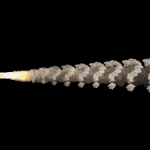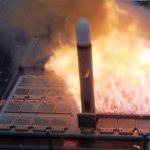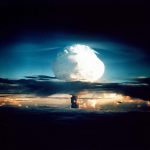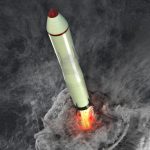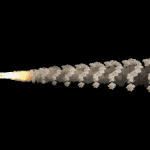Who lost the INF Treaty?
By Pavel Podvig | October 26, 2018
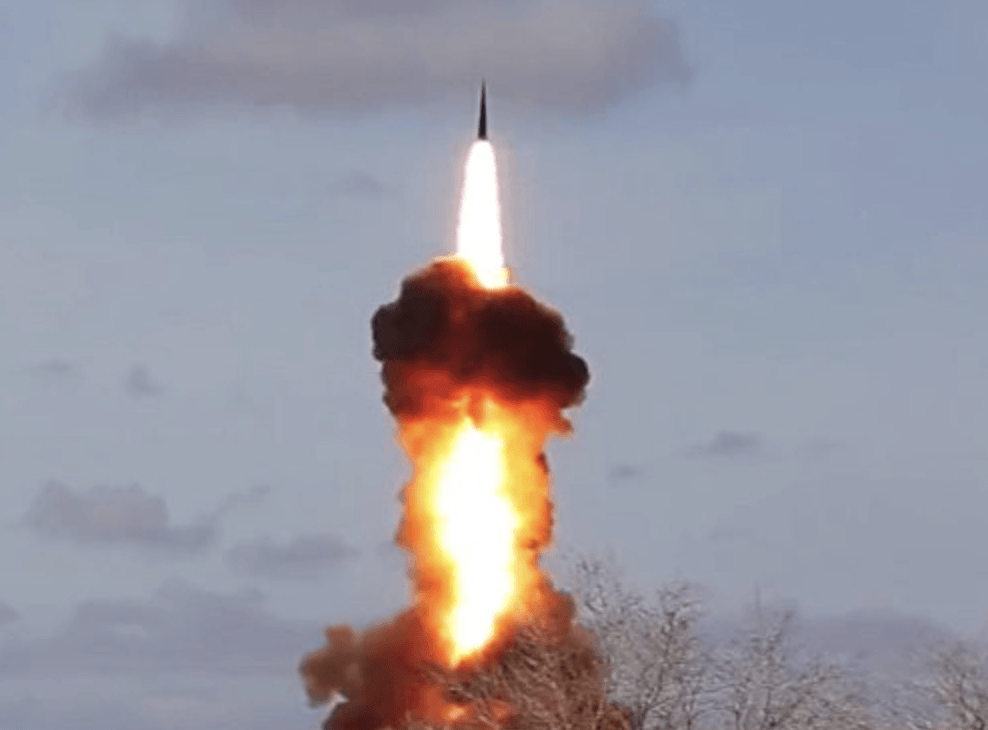
The United States has yet to submit its official notice of withdrawal from the Intermediate Nuclear Forces (INF) Treaty to Russia, but as John Bolton, the US national security adviser, assured his audience at the press-conference that concluded his visit to Moscow, this will be done in due course. Bolton is a skilled speaker and the case he presented sounded almost persuasive: Why should the United States be bound by the treaty when Russia is openly violating it and China, not being a party, is not limited by its terms? The solution he offered—pulling out of the treaty—is as simple and clear as it is wrong, since it is very difficult to see how the United States could benefit from the withdrawal.
But we should leave it to US analysts to worry about US security benefits. What is more important is that the decision to scrap the INF Treaty endangers the entire architecture of nuclear arms control agreements. There are not very many left—New START is the only one that sets limits on the number of weapons, and that treaty will probably expire in 2021 without being extended or replaced by a new one.
It would be difficult to put together the remaining pieces of the nuclear arms control and disarmament process unless we have a better picture of what happened and how we got to this point. Although this failure of arms control is definitely not an orphan, looking for those responsible would hardly be productive. A useful analysis of the situation should try to see what did not work in the process, whether it is possible to fix it, and whether arms control could be restarted again.
The immediate cause of the current INF Treaty crisis is a Russian cruise missile development program that began some time around 2008. In 2010, the ground-launched missile, later identified as 9M729, was tested in a way that made the United States suspect that the missile is not compliant with the INF Treaty. These suspicions eventually led to a firm conclusion, and in 2014 the United States formally accused Russia of violating the treaty. Russia denied any wrongdoing, the half-hearted attempts to resolve the dispute through diplomatic channels failed, and the prospect of losing the INF treaty became a reality.
One of the most troubling aspects of this situation is that we do not really know what happened. Aside from the type of the missile and its designation, the United States has not publicly released any details of the alleged violation. Given the certainty with which the United States makes its case against Russia, it is probably safe to assume that it has fairly strong evidence that the violation did indeed take place. But there are violations and violations. The real questions to ask are how serious it was, whether it was as “blatant and deliberate” as the United States wants us to believe, and whether it was so militarily significant as to warrant a strong US response. In short, was it grave enough to wreck most of what’s left of the arms control process over?
How serious was the violation? On some level, any violation should be taken seriously, but there are many ways to step outside of the treaty boundaries. From the little we know about what happened, we can say with high confidence that Russia never tested its 9M729 missile to the range prohibited by the treaty. US accusations seem to be based on an analysis of the “range capability” of the missile, which is not defined very precisely in the text. The United States insists that the violation was not a simple technicality, but unless they provide more information we should be careful about putting too much trust into the American assertion.
It is even more difficult to judge whether the violation was deliberate, but there are reasons to doubt that it was. The way things work in Russia, the defense industry has a great deal of leeway in pursuing their development projects. This is especially true for those who already have successful projects on their record. The Novator design bureau, which builds the 9M729 missile, is one of them—it has already developed an entire line of cruise missiles that includes a cruise missile for the Iskander-M system and the sea-launched Kalibr. There are probably oversight arrangements in place, but they may not be strong enough to effectively deal with complex cases. Lawyers in Russia do not quite have the power they have in the United States. In any event, the image of President Putin or his generals ordering development of a new system with the specific purpose of circumventing a treaty just does not fit into what is known about the way the Russian leadership operates.
What about “blatant”? By all indications, at the time the test was conducted, Russia believed that it was fully compliant with the treaty. Maybe the Russians were. The United States referred to “attempts to obfuscate the nature of the program,” but Russia may have considered these to be measures that were taken to ensure that the tests are consistent with the letter of the treaty.
Finally, the military significance of this new ground-launched system and the potential advantage that Russia may have hoped to gain by developing and deploying it should not be overestimated. If you read some US commentaries, you might get an impression that we are dealing with a replay of the original Euromissile crisis, when the Soviet Union deployed several hundred SS-20 missiles, each carrying three warheads, to threaten Western Europe. That is hardly the case today. So far, reports suggest that Russia deployed two 9M729 battalions with the total of eight launchers in 2017 (although it may have produced more since then). More important, though, the new ground-launched cruise missiles would not be the main source of threat to Europe. The main quick-strike threat would come from sea-launched and air-launched cruise missiles, such as Kalibr and Kh-101, which Russia has been deploying in rather large numbers. These missiles have never been constrained by the INF Treaty, and Russia has tested them in combat during its intervention in Syria. There is every reason to believe that these missiles can carry nuclear warheads, just as most other non-strategic weapons in Russia’s arsenal.
This is not to say that adding more weapons is not problematic, but it does point at a larger problem—the very presence of nuclear weapons in Europe. It would be wrong to assume that if the dispute about the INF Treaty were resolved, and Russia somehow returned to compliance, the security situation in Europe would dramatically change for the better.
Taking all this together, Russia’s violation does not seem to reach the level that would justify destruction of a key disarmament agreement, most likely bringing irreparable damage to the larger arms control architecture. Interestingly, the Europeans seem to understand this better than their US allies. Despite numerous briefings by two administrations, NATO states have been reluctant to share US assessments of the gravity of the Russian violation. In its most recent statement on the matter, NATO committed itself to the preservation of the treaty and, while expressing concerns about Russia’s actions, left the door open for it to provide an explanation.
And yet we are at the point where the treaty is unlikely to survive. Of course, it would be easy to blame this mistaken move on John Bolton’s crusade against treaties or president Trump’s penchant for bold if poorly thought-out decisions. But they just pulled the trigger of a gun that was loaded long before they took office.
Russia certainly bears the most responsibility for what is happening. Whether it was a deliberate decision to ignore the treaty limits or an oversight, Russia had plenty of opportunities to come clean about its actions and signal its readiness to resolve the issue. It would have been extremely difficult but not impossible to reach a mutually agreeable settlement; now it is probably too late.
But Russia is not the only one responsible. The Obama administration appears to have seriously mishandled the issue. When it first formally accused Russia of violating the treaty, it did not say what the accusation was about. That vagueness really didn’t help to start conversation on a constructive note. The public was kept in the dark as well, although some details eventually dribbled out. In the end, however, it was not nearly enough to have a reasonably good understanding of what had actually happened. In the absence of reliable information, a very simple narrative took hold very early on: Russia has committed a “blatant violation” of the INF treaty and refuses to admit it.
That simple line was happily and very much uncritically accepted by almost everybody. Some people saw this as an opportunity to attack the Obama administration and its handling of foreign policy, some used it to lobby for their favorite cause, be that better missile defense, more weapons in Europe, or more weapons in Asia. Even those who were concerned about potential implications of this situation for arms control focused primarily on finding a way to resolve the conflict, whether by diplomacy or by pressuring Russia into compliance. The “blatant violation” narrative was rarely questioned and was almost impossible to counter, since any attempt to do so was met with a reference to classified intelligence that was said to prove the violation beyond reasonable doubt.
The violation itself, however, was probably not the main reason that Russia was reluctant to engage about the INF. The Obama administration, in fact, at some point would have been satisfied by Russia’s admitting a mistake and offering a semi-plausible explanation. But even if Russia believed the American administration would accept that admission, Moscow probably figured that the admission would not stop the accusations from other quarters—too many people already assumed that it was a treaty violator and had interest in pressing that case.
Russia had only itself to blame for making that charge stick all too easily—the accusations of INF non-compliance appeared shortly after Russia annexed Crimea and amid its support of separatists fighting in Eastern Ukraine. Still, the way the United States framed the INF violation issue in the beginning narrowed the range of options available to resolve the dispute. The Obama administration was, in fact, concerned about the direction the discussion was going, especially when people started calling for tough military measures against Russia. But since the United States still would not disclose more information about Russia’s alleged violations, it gradually lost control of the narrative.
Neither the experts nor the international community as a whole managed to challenge that narrative, forcing the United States to demonstrate the basis for its accusations and making Russia publicly answer to the charge. As a result, we are facing a prospect of one of the key nuclear disarmament agreements and probably the entire arms control process being destroyed essentially in secret, based on the evidence that has never been made public.
The INF Treaty is, of course, an essentially bilateral agreement, so it may appear that there is not much that anyone except the United States and Russia can do. But this should be recognized as a problem the world should fix, not the state of affairs it must accept. In the end, it is highly unlikely that the United States and Russia (add the name of any other nuclear armed state here) will get serious about nuclear disarmament on their own. The hope that they would do that based on some rational calculation of strategic stability and security interest is seriously misplaced. After all, the INF Treaty itself would not have been possible without the public demanding the end of a dangerous nuclear confrontation in Europe.
In a theory popular in the United States, it was the threat of US missiles deployed in Europe, with their short flight times to Moscow, that brought the Soviet Union to the negotiating table for the INF; so now, it would take a similar threat to force Russia to return to compliance with the treaty. But that was not really how the INF came to be.
Reagan did not make the double-zero proposal—no medium-range missiles on either side—that later became the INF Treaty out of the kindness of his heart. The United States and NATO were under tremendous pressure from their own publics to do something about nuclear missiles in Europe. Gorbachev agreed to the treaty because he wanted to take a tangible step to reduce nuclear danger. The INF Treaty fit the bill very well, but had it been simply about the short flight time of US missiles deployed in Europe, the Soviet Union would have toughed it out, as Russia probably would today.
Unfortunately, history suggests that the situation is going to have to get worse, probably much worse, before public pressure will force leaders to make it better. It is not clear how frightening the US-Russia nuclear standoff in Europe must become before the world realizes that the risk of relying on nuclear weapons to keep the peace is intolerably high. One can only hope that this realization comes sooner rather than later, and before it is too late.
Together, we make the world safer.
The Bulletin elevates expert voices above the noise. But as an independent nonprofit organization, our operations depend on the support of readers like you. Help us continue to deliver quality journalism that holds leaders accountable. Your support of our work at any level is important. In return, we promise our coverage will be understandable, influential, vigilant, solution-oriented, and fair-minded. Together we can make a difference.
Share: [addthis tool="addthis_inline_share_toolbox"]

